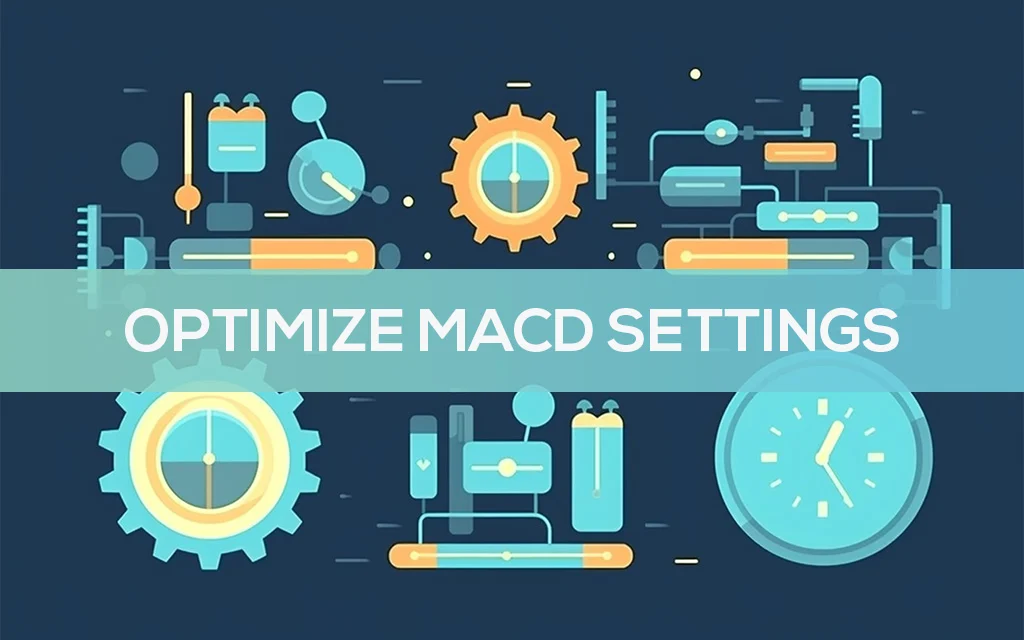Drawing tools on crypto charting tools are your trusty sidekicks in the bustling world of digital currency trading. Smart trades hinge on sharp analysis, and that’s where your mastery of these tools takes center stage. They turn raw data into a treasure map, and I’m here to guide your hand. With them, you’ll trace the contour of trends, pinpoint support and resistance, and unveil the nuance of market movements. Ready to dive in? It’s time to redraw the lines of your trading future, one accurate stroke at a time.
The Foundation of Crypto Chart Analysis
Understanding the Role of Trend Lines
Let’s dive into trend lines and their role in crypto trading. Trend lines map the market’s mood. We draw them to link highs and lows. They show where prices might head.
They are like clues in a treasure hunt, guiding traders on when to buy or sell.
If prices stay above a trend line, the market’s looking strong. If they dip below, watch out – a drop might come.
Trend lines turn complex market moves into simple, clear signals. But, there’s a catch. To use them right, practice is a must. You need a sharp eye to spot the right highs and lows to connect. With tools on TradingView, you can draw these lines with a click and drag. It’s that simple.
The Basics of Support and Resistance
Next up, let’s tackle support and resistance. We talk about these a lot in trading. Why? Because they are key to understanding chart movements.
Support is like a floor for prices, a level they don’t often drop below. Resistance is the opposite – a ceiling that prices struggle to break. Think of playing a game where you bounce a ball. The floor stops the ball from falling and the ceiling keeps it from flying up.
When prices get close to these levels, they either bounce back or burst through. This can signal a good buying or selling point. Recognizing these crucial trading zones needs both theory and hands-on practice.
Your first steps? Spot where prices stopped falling or rising before. Mark these points. They could become important support or resistance zones in the future.
Working with support and resistance isn’t hard. The right chart patterns and indicators on your crypto charting tools will make it clearer.
Learning these tools sharpens your chart analysis skills. Mastering them does not happen overnight. Start simple with trend lines and support and resistance. Apply these concepts consistently, and you’ll be on your way to smarter trades.
Deciphering Market Movements with Technical Indicators
Utilizing Moving Averages and Bollinger Bands
Let’s talk shop about how to see where money moves in crypto. We start with moving averages. They smooth out price action. You see trends, not daily ups and downs. Now, think of Bollinger Bands as rubber bands. They expand and squeeze based on price moves. They tell us if a coin is ready to burst or shrink in price.
Now, let’s dig deeper. Simple moving averages add up closing prices over time, then divide by that time. For crypto, maybe you watch a 10-day average. It’s like watching a race. You see who’s leading lap by lap, not just who sprints fast in the moment. Bollinger Bands have a middle line—that’s your moving average. Then, there’s an upper and lower band. Prices move in these bands like a pinball. If they hit the top or bottom, they might bounce back.
Mastering RSI and MACD for Predictive Edge
Next, we stick our noses into RSI and MACD. RSI is like your workout heart rate monitor. It shows if a crypto coin works too hard or not enough. It ranges from 0 to 100. Above 70? It might be overdoing it and slow down. Below 30? It’s got room to run faster.
MACD is two lines racing on a chart. One fast, one slow. They tell us if the coin might change its path soon. When they cross, get ready. The coin might pick up speed or slow down.
Looking at these tells you a story. It’s not about a single line or band. It’s about patterns and shifts. Like weather forecasting, you see if a storm is coming or if it’s chill sailing.
We’ve got the basics down, my friends. Each tool is a clue in the crypto mystery. Watch them, get to know them. They’re your guides in the wild world of crypto trading.
Enhancing Trading Strategies with Advanced Tools
Applying Fibonacci Retracements Effectively
Using Fibonacci retracement in crypto is like finding hidden steps for prices. First, pick big price moves. Draw lines at certain spots: the top, bottom, and key points in between. These points are like magic numbers—61.8%, 50%, 38.2%. They show where prices may stop and reverse. It’s where traders get ready to jump in or out.
You don’t just draw and hope. Watch how prices react at these levels. Do they bounce back or break through? This helps you guess future moves. But remember, it’s a tool, not a crystal ball. Mix it with others, like trend lines and volume, for smarter trades.
Interpreting Complex Chart Patterns and Candlestick Formations
Charts tell stories of battles between buyers and sellers. Chart patterns for cryptocurrency are the footprints of this fight. Patterns like ‘head and shoulders’ or ‘triangles’ signal what might come next. Learning these shapes takes time but pays off.
Candlesticks add more color to this story. Each one shows a day’s fight in price. A ‘green’ candle means buyers won. A ‘red’ candle means sellers took the day. Shapes like ‘hammers’ or ‘shooting stars’ can warn of changes ahead. Spot these early, and you stand to gain.
Watch the patterns and candles together. They boost your chances of guessing right. Keep practicing and your chart analysis skills will soar. You’ll trade with more confidence and less guesswork. Always keep learning and testing your strategies. The market waits for no one.
Trading is tough, but with these drawing tools, you’re armed for battle. Ready, steady, draw!
Streamlining Analysis with Charting Software and Drawing Tools
Annotating and Customizing Charts for Better Insights
Super traders use wicked tricks to win. In crypto, it’s all about cool charts. Let me spill the beans. Making marks on charts can save your bacon. You spot trends, dips, and rally points like a boss. Annotations are your secret map.
What does annotating crypto charts mean? Plainly, it’s drawing lines and shapes on price graphs. It shows where the market’s been and hints where it’s going. You use fancy terms like “trend lines” and “support and resistance.” With good marks, you spot key zones fast.
Quick tip for the savvy: Use colors and labels carefully. A chart that’s easy on the eyes makes a world of trouble for errors. Plus, don’t overdo it. A messy chart is like a broken compass.
Leveraging Automated Drawing Tools for Efficiency
In crypto trading, speed is king. You need fast, smart moves. Automated tools are your ace in the hole. They spot patterns before you blink.
What’s the big deal with automated drawing tools? They sketch the important stuff on your charts straight away. This means you say “hello” to more chill time. In seconds, they plot the Fibonacci, trend lines, and RSI levels. You get to do more trades or grab a coffee.
Ever heard of the MACD indicator? It’s like a crystal ball for crypto. The software draws it for you and, boom, you see the buy or sell signs. Same goes for candlestick patterns and Bollinger Bands. With these tools, you play the game like a pro.
Let me give it to you straight: not all tools are buddies. Some are clunky, tough to use. So, pick user-friendly charting interfaces. Your aim? Quick, sharp, and precise tools. They make you a smoother trader.
And hey, keep sharpening those chart analysis skills. Stay on top of your game. Try out different tools. Dash through tutorials, guides, or any educational resources for charting you can find. Learn what works best for you.
Wrapping this up, remember, the market’s a wild creature. To tame it, you need the best gear—a killer combo of smarts and top-notch tools. Get your hands on crypto charting tools that let you annotate and customize quick and easy. Then, grab those automated tools that do half the work for you. Trade smart, trade fast, and watch your crypto fortune grow.
In this post, we dove into the nuts and bolts of crypto chart analysis. We started with the basics, like trend lines, support, and resistance. These are your maps in the world of trading. Next, we took apart technical indicators. Tools like moving averages and RSI can give you a real edge. They’re like signs that show what might happen next in the market.
Then, we leveled up with advanced tools. Fibonacci and complex chart patterns might sound tough, but they can unlock serious secrets in price moves. Lastly, we saw how charting software and drawing tools can make all this analysis smoother. They’re your shortcuts to sharper insights.
I hope you feel ready now to face those charts. Remember, practice makes you better and always keep learning. Good trades often come from good plans, and now you’ve got a solid one. Let’s get out there and put these tools to work. Happy trading!
Q&A :
What are the essential drawing tools for effective crypto charting?
Drawing tools are crucial for technical analysis in cryptocurrency trading. Key tools include trend lines, Fibonacci retracement levels, support/resistance lines, and chart patterns like triangles and wedges. These tools help traders identify potential price movements and make informed decisions.
How can drawing tools on crypto charting platforms improve trading strategies?
Utilizing drawing tools on crypto charting platforms allows traders to visually analyze market trends and chart patterns, enabling better prediction of price movements. By combining these tools with other technical indicators, traders can develop more robust and strategic trading plans tailored to the volatility of the crypto markets.
Are there any free crypto charting tools with advanced drawing capabilities?
Yes, there are several free charting tools available that offer a range of advanced drawing capabilities. Some popular options include TradingView, which provides basic tools for free with the option to upgrade, and CryptoCompare, which offers an array of free drawing tools for technical analysis.
What is the difference between basic and advanced drawing tools in crypto charting?
Basic drawing tools, such as horizontal and vertical lines, allow traders to mark important price levels, while advanced tools, like Gann Fans and Elliott Wave indicators, offer more sophisticated analyses of price movements and trends, catering to experienced traders who rely on detailed technical analysis.
How do I use drawing tools to identify trends in cryptocurrency charts?
Drawing tools are used by connecting significant highs and lows to create trend lines, channels, and other shapes. Consistently using these tools helps identify bullish or bearish markets, potential reversals, and areas of consolidation. Traders also use them to mark support and resistance levels, crucial for planning entry and exit points in trades.




